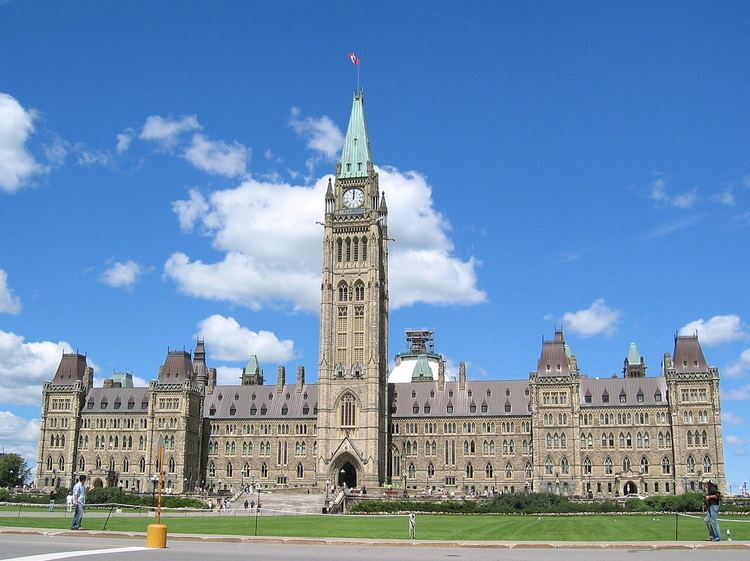Enacted by Parliament of Canada | Date of Royal Assent 31 March 1937 | |
 | ||
The Succession to the Throne Act (1 Geo. VI, c.16) is the act of the Canadian parliament that ratified the Cabinet's consent to His Majesty's Declaration of Abdication Act 1936, an act of the United Kingdom parliament that allowed Edward VIII to abdicate as king of Canada, the United Kingdom, and the other Dominions and pass the throne to Prince Albert, Duke of York, who then became King George VI. However, it was the Canadian government's request and consent, and not the Succession to the Throne Act, that gave the British Act of Parliament effect in and made it part of the law of Canada, as per section 4 of the Statute of Westminster 1931, which allowed the British parliament to legislate for the Dominions only with their agreement.
Contents
Background
Edward VIII abdicated in order to marry Wallis Simpson after facing opposition from the governments of the United Kingdom and the Dominions, including Canada. Although the King had signed instruments of abdication on December 10, sending notice of this by cable (and later one of the instruments by mail, both signed by him) to the Governor General of Canada (the Lord Tweedsmuir), he was still king until Royal Assent was granted to His Majesty's Declaration of Abdication Act 1936, which was passed through the British Houses of Parliament in one day, with no amendments. The Canadian government (along with those of Australia, South Africa, and New Zealand) requested and gave its consent, via Order in Council, to the act becoming law in Canada, under the terms of the Statute of Westminster 1931, which stipulated that the British parliament could pass legislation for any Dominion only at the request and with the approval of that Dominion's government. The King then issued an Order in his British Council to authorize the inclusion of the Dominions in the Abdication Act. The South African parliament later passed its own law, His Majesty King Edward the Eighth's Abdication Act, 1937, recognizing George VI's accession as king of South Africa as being on December 10, 1936, while the legislature of the Irish Free State also passed a backdated law, the External Relations Act, on December 12, 1936.
Canadian law
The Succession to the Throne Act ratified the changes to the rules of succession in Canada and assured consistency with the changes in the rules then in place in the United Kingdom and the other Dominions. The act was not legally required at the time, as the Canadian government's request and consent to His Majesty's Declaration of Abdication Act 1936 had already made it part of Canada's law and the Governor General had already proclaimed the Duke of York as King George VI. (Indeed, Royal Assent to the bill was granted in the name of George VI.) However, constitutional experts noted that "Whether necessary or not, it was clearly designed to demonstrate Canada's equality with Britain in the British Commonwealth and to display the Canadian aspect of the monarchy." Under present Canadian law, the Canadian government cannot request and consent to any British act becoming part of Canadian law, as the Canada Act, 1982, ended all remaining authority of the UK parliament to legislate for Canada, both by the act's own terms and through enactment of the Constitution Act, 1982 (whose schedule repealed section 4 of the Statute of Westminster 1931 in Canada).
